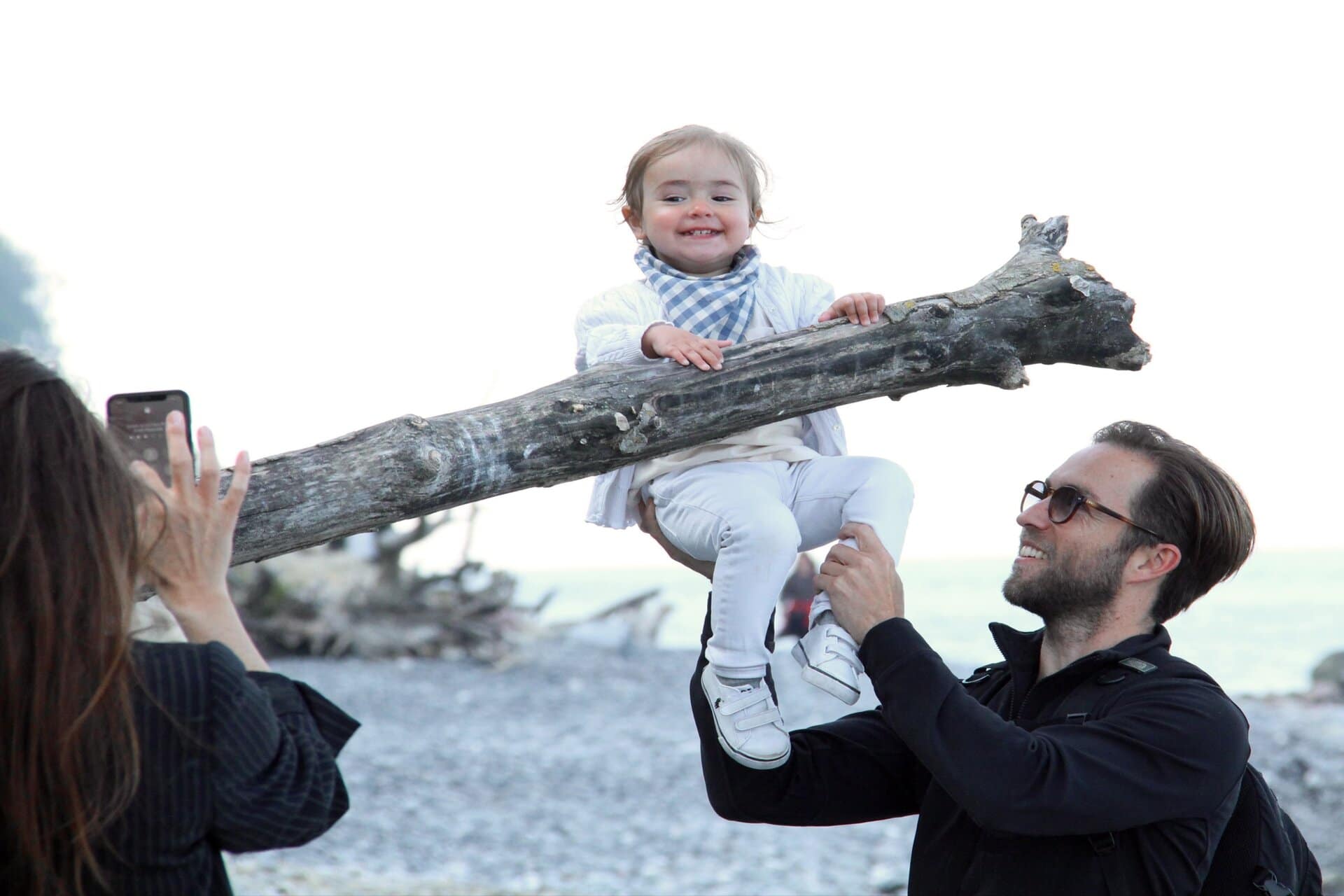Family Life
4 min Read
5 Tips for Taking Awesome Pictures with Your Phone

March 12, 2021
Family Life
4 min Read

March 12, 2021

We often fall into the trap of just snapping pictures quickly to capture a moment, but knowing a little bit about your phone’s camera, coupled with tips for getting a great shot, might just make all the difference to your family albums.
The camera roll on my phone is hilarious—it’s full of random, blurry, awkward pictures of my girls, plus 20 to 30 selfies of each of them every time they manage to get their hands on my device. Most of them are ridiculous and unusable for anything other than a giggle as I scroll through, but then there are the odd gems, when I’ve managed to catch them not posing or giving me a weird, forced smile. Where they are laughing hysterically, or being authentically sweet to each other. I’d say it’s a 1:47 ratio of great snap to terrible shot.
While I’m betting that most professional photographers would say that it’s actually not a bad strategy to just shoot and shoot and shoot some more—that it’s somewhat about quantity to capture those moments—I started to wonder if I was actually using my phone to its full capacity and decided to research what I could do to up my picture-taking game. With that in mind, I’ve rounded up a few ideas here, to help you capture more of those gems than ever.
My iPhone actually has two cameras and I had no idea. I didn’t realize that I could shoot pictures at two different distances (without zooming in, which inevitably gets blurry at some point) or that my phone could do a wide-angle shot. Many models of phones, both iPhone and android, have different lenses. Knowing what you’re working with is the first step, so you’ll know how to set up your phone before attempting a shot.
I spent all winter trying to take a nighttime skyline shot of the CN Tower in Toronto. It never worked. There was too much light pollution for the default settings on my iPhone. Experimenting with the exposure to dull the light in the foreground meant I finally caught a gorgeous sunrise skyline. This works for taking pictures of your kids, too. If you shoot into the light, you can play with the exposure to capture incredible silhouettes of your kiddos with a gorgeous sunset or sunrise behind them.
Other features include portrait mode, filters, brightness and more. Poke around online and see what others have to say about your specific phone model—you might discover a tutorial or two to really help you with your device.
This was a tip a photographer friend gave me. Unless you are taking a portrait, avoid shooting at your eye level. A more creative shot is to get high or low for a more interesting perspective. A couple of weeks ago, I took my girls skating and Sophie tripped on the ice. She flipped to her back and was giggling something fierce, so I stood over her to take the picture. It’s now one of my favourite shots of her.
Video tip: I was also given the suggestion to try taping your phone to someone while they do something action-oriented. Press record and let the camera capture a first-person view of the activity. I tried this with my kids and skating, but it would work for cycling, skateboarding, etc. Just be sure the phone is well-secured and in a heavy-duty protective case!
We all know it’s tricky to catch a moving object, and since kids never stop moving, you likely have a camera roll full of blurry photographs. If you want to capture the perfect still image of a moving object, try burst or continuous mode. This feature lets you take up to ten continuous photos per second. You can then scroll through a sequence of pictures until you find your ideal action photo.
Don’t just wait for the action. There are amazing photo opportunities happening all the time. Taking pics of my kids getting ready for an activity can show their excitement, for example. Just thinking about how zooming in on hand-holding, or a pair of muddy sneakers, or a messy ponytail can tell a story without really telling a story.